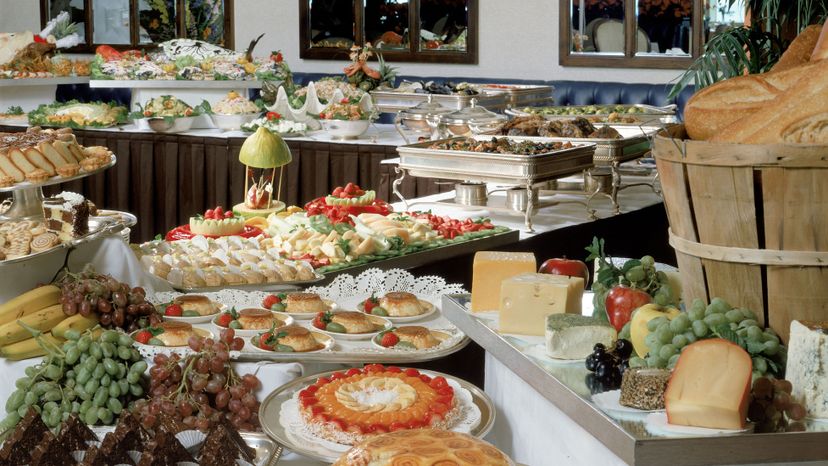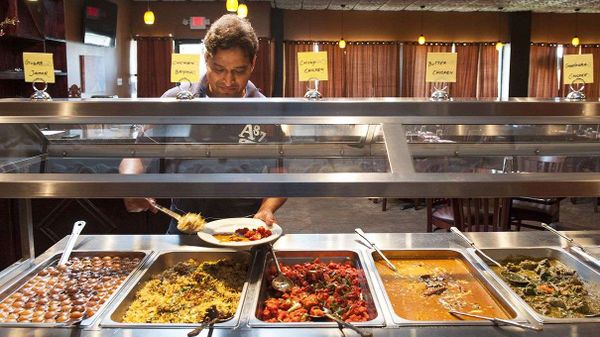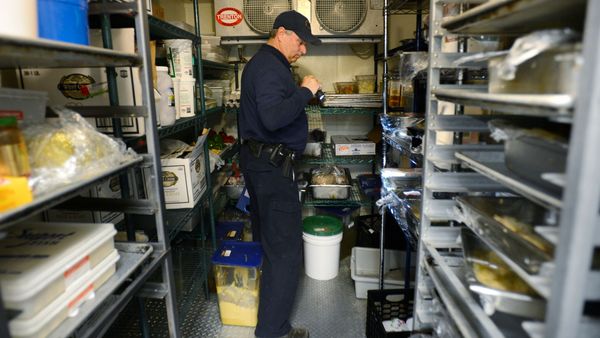
It's lunchtime on a Tuesday, and you have exactly 27 minutes before you need to be back at the office for a marketing meeting. If you have to choke down one more dry turkey sandwich from the corner deli or a tasteless salad from the hippy co-op, you're gonna cry. But what's this — the Indian place that's usually only open for dinner has an $8 lunch buffet? Score!
When it comes to food, time-crunched Americans love variety, speed and low prices, which is precisely why they love a good buffet. For decades, savvy restaurant owners have been cashing in on the buffet boom — not just all-you-can-eat chains like Golden Corral or China Buffet, but regular a la carte restaurants that choose to offer a weekday lunch or Sunday brunch buffet.
Advertisement
Chefs and restaurant industry consultants say that when executed right, a well-designed buffet with steady foot traffic (stomach traffic?) is a certified moneymaker. Here are five reasons why:


